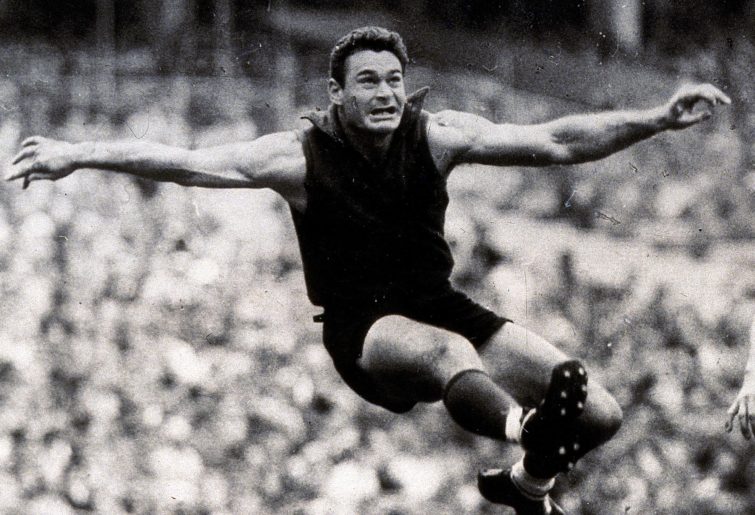As a Pies supporter, I have of course always been fascinated by the Machine, Collingwood’s four-in-a-row flag team from 1927 to 1930.
Competing a grand era, the Pies also won the flag in 1935 and ’36. At that stage, Collingwood had won 11 of 20 grand finals.
During some of this lockdown period, it had me thinking about a top ten list for the greatest AFL dynasties of all time.
I did not set out with any particular criteria to set parameters for how long a dynasty might last. I have always been a bit of a reductionist when it comes to sporting success. I believe that fundamentally, fans appreciate teams and individuals that come first, and they are the ones that stick in people’s memories. I know – a bit of a conundrum for a Pies supporter.
As a child growing up in the 1970s and ’80s, bragging rights were always about premierships, and I am not convinced things have changed much, if at all, in that regard over the years.

(Photo by Ryan Pierse/AFL Media/via Getty Images )
I have also never been particularly convinced about arguments based on stats or different finals systems or competition conditions for bolstering the relative strengths of one sporting era over another. They typically come across as circular or slippery slope arguments. You can only win in the era that you play in.
A good recent example is the debate whether LeBron James or Michael Jordan is the NBA GOAT. James’ fans contend a series of individual stats, as well as arguments about relative playing style and strengths in different eras to support his case, which leads to Jordan fans rebutting with counter arguments, and around it goes. Jordan has three more titles, as well as a few more key individual awards, than James, so I probably do not need to spell out my views.
As a result, when looking at AFL dynasties, I am primarily interested in the number of premierships won in close proximity to each other. To help distinguish between dynasties of similar rank, I also considered the number of times a team made a grand final in their dominant era, as well as shoulder premierships, such as flags a few years apart if it helps to separate teams that are close in rankings.
It is not sophisticated and I appreciate that some AFL fans may choose to point to other factors in more recent eras that indicate that it has become increasingly difficult to win a flag, such as increased professionalism, salary cap, draft, expanding the number of teams and the existence of the challenge system for pre-1931 teams. That is perfectly fine. I suspect, however, that most of the argument might be about rankings rather than which dynasties make the top ten.
Also, I do not distinguish between the VFL and AFL eras. I understand this could seriously irritate some people, but I consider the AFL a natural continuation of the previous VFL era, and we potentially lose a lot of rich history if we treat them as separate eras. This discriminates against interstate teams unfortunately.
The top five of all time, in order
1. Demons – mid to late 1950s: five flags in six years (1955-57, ’59-60), seven grand finals in a row (runners-up in 1954 and 1958)
2. Pies – mid to late 1920s: four consecutive flags (1927-30), six grand finals in a row (runners-up in 1925-26)
3. Hawks – 1980s: five flags in eight years (1983, ’86, ’88-89, ’91), eight grand finals in nine years (runners-up in 1984-85, ’87), seven grand finals in a row
4. Blues – mid to late 1900s: three-peat (1906-08), five grand finals in a row (runners-up in 1909-10), five flags in ten years, including 1914-15
5. Hawks – early to mid 2010s: three-peat (2013-15), four flags in eight years (2008 flag plus three-peat), four grand finals in a row (runners-up in 2012)

Ron Barassi starred in Melbourne’s dynasty. (Getty Images)
Ranks five to ten in no particular order
• Lions – early 2000s: three-peat (2001-03), four grand finals in a row (runners-up in 2004)
• Demons – early 1940s: three-peat (1939-41)
• Tigers – late 1960s to early 1970s: four flags in eight years (1967, ’69, ’73-74), five grand finals in eight years (runners-up in 1972)
• Fitzroy – late 1890s to mid 1900s: four flags in nine years (1898-99, 1904-05), twice back-to-back, seven grand finals in nine years (runners-up in 1900, ’03, ’06)
• Bombers – mid to late 1940s: three flags in five years (1946, ’49-50), six grand finals in a row (runners-up in 1947-48, ’51)
Honourable mentions
• Blues – early 1980s: three flags in four years (1979, ’81-82), back-to-back flags
• Blues – late 1960s to early 1970s: three flags in five years (1968, ’70, ’72), five grand finals in six years (runners-up in 1969 and 1973)
• Cats – late 2000s: three flags in five years (2007, ’09, ’11), four grand finals in five years (runners-up in 2008)
The 1980s Hawks versus the 1920s Pies was line ball, but I was persuaded by four in a row to give the Pies the second ranking, although the Pies benefited from using the challenge system in both 1929 and 1930 to win those flags.
I deliberately omitted the 1964 Demons flag and the 1935-36 Pies flags, as these flags did not appear to impact their ranking, and were a few years after the main periods of success, whereas the reference to the Blues’ 1915-16 flags appeared relevant to their ranking.
I attempted to rank five to ten a number of times, but it went around in circles without more in-depth statistics to help separate them.






























































































